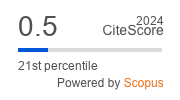Alirokumab in the practice of a multidisciplinary outpatient hospital: results of an open, noncomparative prospective study
https://doi.org/10.47093/2218-7332.2020.11.4.15-22
Abstract
Aim. Evaluation of efficacy and safety of alirocumab in patients with atherogenic dyslipidemia in real clinical practice.
Materials and methods. Patients with atherogenic dyslipidemia and failure to achieve target lipid levels were included in a prospective, non-comparative study. For the final analysis, the data of 92 patients were studied: 61 men and 31 women; average age 59.8 ± 9.6 years. Alirokumab (Praluent, Sanofi) was administered at a dose of 150 mg subcutaneously once every 2 weeks for 3 months. The primary endpoint was the achievement of the target level of low-density lipoprotein cholesterol (LDL-C). Additionally, the level of lipoprotein(a) (LP(a)) and high-density lipoprotein cholesterol (HDL-C) was assessed. To assess safety, liver tests, creatinine levels and glycemia were examined; side effects have been studied. To test statistical hypotheses, a paired t-test and Wilcoxon’s test were used.
Results. After 3 months therapy, there was a statistically significant decrease in LDL-C: 1.45 [0.99; 2.14] vs 3.00 mmol / l [2.17; 3.81] initially (p < 0.0001); the median of the decline was –47% [–25; –65]; the target level of LDL-C was achieved in 40 (43%) patients. An increase in HDL-C was noted after 3 months treatment, their level was 1.36 ± 0.41 mmol / L vs 1.31 ± 0.38 mmol / L at baseline (p < 0.01). The concentration of LP(a) was re-measured in 21 patients with a baseline level > 30 mg / dL: a statistically significant decrease was achieved after 3 months: 67 mg / dL [46; 155] vs 85 mg / dL [58; 187] initially (p < 0.001). Indicators of liver function tests, creatinine and fasting glycemia did not change significantly. Side effects and undesirable effects were not recorded.
Conclusion. In real clinical practice, after 3 months treatment with alirokumab there was a significant decrease in the level of LDL-C, target levels were achieved in 43% of patients, there was a significant decrease in the level of LP(a) and an increase in HDL-C.
About the Authors
A. O. BueverovRussian Federation
Alexey O. Bueverov, Dr. of Sci. (Medicine), Professor, Leading Researcher of the Hepatology Department; Deputy Chairman of the Board
61/2, bld 1, Shchepkina str., Moscow, 129110
Bolshaya Akademicheskaya str., 39, Moscow, 125008
+7 (916) 678-43-94
P. O. Bogomolov
Russian Federation
Pavel O. Bogomolov, Cand. of Sci. (Medicine), Scientific Head of the Department of Hepatology; Chairman of the Board
61/2, bld 1, Shchepkina str., Moscow, 129110
Bolshaya Akademicheskaya str., 39, Moscow, 125008
A. A. Kucherov
Russian Federation
Alexey A. Kucherov, Head of the Cardiology Department of the Clinic
Bolshaya Akademicheskaya str., 39, Moscow, 125008
V. E. Syutkin
Russian Federation
Vladimir E. Syutkin, Dr. of Sci. (Medicine), leading researcher in the liver transplantation department
Bolshaya Sukharevskaya sq., 3, Moscow, 129090
References
1. Stols-Gonçalves D., Hovingh G.K., Nieuwdorp M., Holleboom A.G. NAFLD and atherosclerosis: two sides of the same dysmetabolic coin? Trends Endocrinol Metab. 2019 Dec; 30(12): 891–902. https://doi.org/10.1016/j.tem.2019.08.008 PMID: 31630897
2. Assis D.N. Chronic complications of cholestasis: evaluation and management. Clin Liver Dis. 2018; 22(3): 533–44. https://doi.org/10.1016/j.cld.2018.03.014 PMID: 30259851
3. Hüsing A., Kabar I., Schmidt H.H. Lipids in liver transplant recipients. World J Gastroenterol. 2016; 22(12): 3315–24. https://doi.org/10.3748/wjg.v22.i12.3315 PMID: 27022213
4. Madhwal S., Atreja A., Albeldawi M., et al. Is liver transplantation a risk factor for cardiovascular disease? A meta-analysis of observational studies. Liver Transpl. 2012; 18: 1140–6. https://doi. org/10.1002/lt.23508 PMID: 22821899. Erratum in: Liver Transpl. 2013 Jan; 19(1): 113. Albeldawdi, Mazen [corrected to Albeldawi, Mazen]. https://doi.org/10.1002/lt.23594 PMID: 22821899
5. Balmer M.L., Dufour J.F. Treatment of hypercholesterolemia in patients with primary biliary cirrhosis might be more beneficial than indicated. Swiss Med Wkly. 2008 Jul 26; 138(29–30): 415–9. PMID: 18654866
6. Burman B.E., Jhaveri M.A., Kowdley K.V. An update on the treatment and follow-up of patients with primary biliary cholangitis. Clin Liver Dis. 2017; 21(4): 709–23. https://doi.org/10.1016/j.cld.2017.06.005 PMID: 28987258
7. Roth E.M., Davidson M.H. PCSK9 inhibitors: mechanism of action, efficacy, and safety. Rev Cardiovasc Med. 2018; 19(S1): S31–46. PMID: 30207556
8. Tomlinson B., Hu M., Zhang Y., et al. Alirocumab for the treatment of hypercholesterolemia. Expert Opin Biol Ther. 2017; 17(5): 633–43. https://doi.org/10.1080/14712598.2017.1305354 PMID: 28277798
9. Steg P.G., Szarek M., Bhatt D.L., et al. Effect of alirocumab on mortality after acute coronary syndromes. Circulation. 2019; 140(2): 103–12. https://doi.org/10.1161/CIRCULATIONAHA.118.038840 PMID: 31117810
10. Leiter L.A., Tinahones F.J., Karalis D.G., et al. Alirocumab safety in people with and without diabetes mellitus: pooled data from 14 ODYSSEY trials. Diabet Med. 2018; 35(12): 1742–51. https://doi.org/10.1111/dme.13817 PMID: 30183102
11. 2019 ESC/EAS guidelines for the management of dyslipidaemias: Lipid modification to reduce cardiovascular risk. European Heart Journal. 2020; 41: 111–88. https://doi.org/10.1093/eurheartj/ehz455 PMID: 31591002
12. Stroes E., Guyton J.R., Lepor N., et al. Efficacy and safety of alirocumab 150 mg every 4 weeks in patients with hypercholesterolemia not on statin therapy: the ODYSSEY CHOICE II study. J Am Heart Assoc. 2016 Sep 13; 5(9). PII: e003421. https://doi.org/10.1161/JAHA.116.003421 PMID: 27625344
13. Theocharidou E., Papademetriou M., Reklou A., et al. The role of PCSK9 in the pathogenesis of non-alcoholic fatty liver disease and the effect of PCSK9 inhibitors. Curr Pharm Des. 2018; 24(31): 3654–7. https://doi.org/10.2174/1381612824666181010123127 PMID: 30317984







































